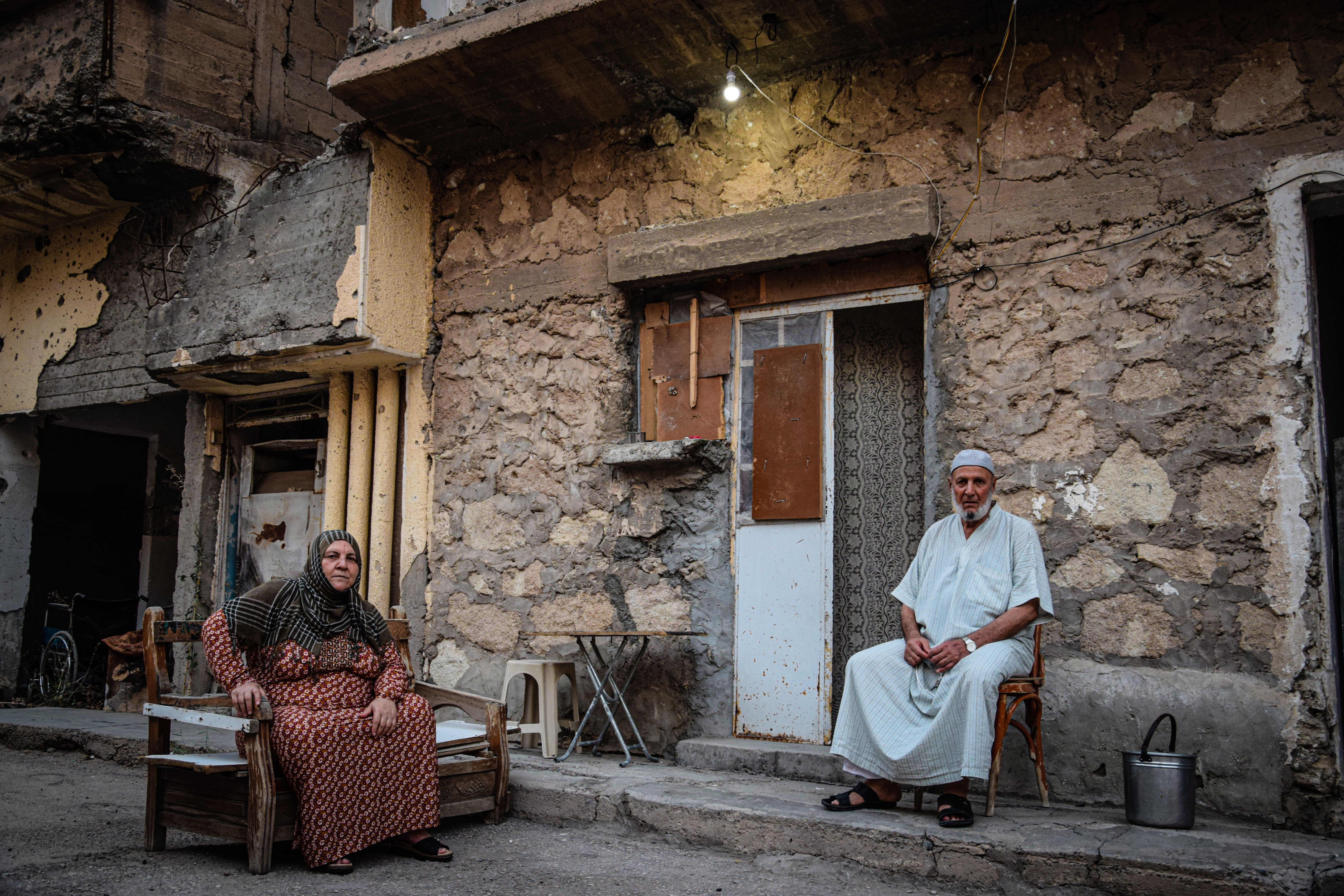Unpacking the barriers: Behavioral Insights on Women's Inheritance Rights in Syria
Her Right to own and control Part 2
May 29, 2023

By: Kenda Alzaim – Head of Solutions Mapping
Are you curious about the progress of our latest project? One that aims to highlight the challenges faced by women in accessing their inheritance rights in Syria. Join us to know more about how UNDP Accelerator Lab, in collaboration with Magenta, applied behavioral insights to women accessing their inheritance rights. We're thrilled to share the intriguing insights we've uncovered with you. If you missed our previous post, don't worry - you can catch up on it Here. In this blog, we provide a summary of our methodology, along with the key insights and discoveries we've made.
As mentioned in the previous blog, the project followed the behavioral insight approach to identify the behaviors around inheritance and unpack the underlying behavioral barriers that are standing between women their inheritance rights. Based on the barriers map, Magenta designed several behaviorally informed interventions that addresses the behavioral barriers and aimed at multiple actors. These interventions will be tested and piloted by the UNDP in their future programs. For more detailed information on methodology, final barrier map and the designed intervention, refer to the final reports Here.
The study focused on the following 4 main steps following the traditional behavioral science process:
Traditional behavioral science process applied to the problem of inheritance in Syria. Source: Magenta Barriers Mapping report
Throughout the process, a collaborative approach was adopted, starting from Step 1: Problem Definition to Step 4: Intervention Design. This involved Magenta conducting a series of co-exploration and co-creation workshops with the UNDP legal team and Accelerator lab, alongside key informant interviews and focused group discussions with specific community members. Instead of solely analyzing individual behaviors, the analysis aimed to capture interactions between individuals and highlight interactions across key actors.
To analyze the drivers of current behaviors and potential barriers to target behaviors, the Behavioral Drivers Model[1] was applied. This model examines barriers at three levels: psychological, sociological, and environmental. By utilizing this model, it was possible to identify general drivers and factors that are often may go unnoticed.
For more detailed information about each step of the process, including how they were carried out, the main barriers faced by women, and the interventions designed based on those barriers, read the final reports here.
In the meanwhile, here are a few key insights and learnings that emerged from our journey:
- Often, we unknowingly exert significant pressure on the vulnerable segments we aim to assist. Unintentionally, our messaging and intervention design demands them to be "more active," take the first step, or lead the way in improving their well-being. We fail to recognize that these individuals often lack power and resources, and many of their decisions are influenced by external pressures. They find themselves constrained by their communities' values and social norms. By pushing these marginalized groups, particularly women in our case, to take the full lead in demanding their inheritance rights, we risk exposing them to harm. We are forcing them to confront their communities and families, which may jeopardize their safety and potentially leads to worse circumstances than they are already facing.
- Acknowledging the presence of multiple actors when attempting to influence prevailing behaviors or phenomena is essential. In the context of women's inheritance rights, we often overlook the fact that these decisions are influenced not solely by personal choice but also by societal pressures exerted by their families and communities. Neglecting to include these influential members in our interventions or solutions is bound to be ineffective and may even exacerbate the issue. Excluding them might lead to the perception that women are challenging social norms and acting against their community. Moreover, it might lead the community to view us, as service providers, as outsiders imposing interventions and threatening the social fabrics of the community, jeopardizing its unity and solidarity.
On the other hand, by involving these influential members, we can potentially achieve far greater gains. Women would have the chance to have allies within their community who support and advocate for their cause. These allies could be members of their families like fathers, brothers and mothers or community leaders and religious leaders and others who can assist them in accessing their rights.
- Each of these actors has a stake in the inheritance and harbors fears and hopes related to it. During the focus group discussions carried out as part of the barriers mapping process, it became evident that various concerns emerged among different family members. These concerns created barriers that can be analyzed on three levels psychological, sociological, and environmental. For instance, mothers may be concerned with maintaining family cohesion and avoiding conflicts that could potentially impact the family following the father's death. On the other hand, brothers may fear the possibility of the sister transferring her share of the inheritance to her husband, which could result in what would be perceived as the loss of family property or land to a ‘stranger’, which may signify in some cases losing their ‘honor’ in the eyes of the community. Sisters or wives, who are trying to claim their rights, may encounter concerns arising from a lack of resources and knowledge necessary to access the legal processes and system. By understanding and acknowledging these concerns, we can develop more effective interventions that address the underlying fears, barriers and motivations of each actor involved.
- There is often a misconception that religion and social norms are aligned. However, in reality, social norms can contradict religious rules and principles in various ways. In the case of inheritance, Islamic teachings, and Sharia law grant women the right to inherit. However, due to prevailing social norms, women are often deprived of this right. This creates a cognitive dissonance, resulting from the conflict between actions that are based on and justified by social norms, and one's beliefs of being a religious person who abides by religious rules and principles.
- While legal factors are a significant part of the problem, solely addressing them is not sufficient. Interventions need to be multi-faceted and embedded in wider societal change. Without considering family dynamics, social norms, and the role of men in inheritance, legal interventions may not achieve the desired change and may even cause harm. Therefore, it is essential to approach the issue from various angles addressing various levels (sociological, psychological, and environmental).
- Once again, the challenges faced by women regarding inheritance in Syria extend beyond marginalized, underprivileged, or “less educated” groups. It was clear during our key informant interviews and focused group discussions that this issue affects women across all segments of society. However, the extent to which they can resist and seek support depends on their access to resources, whether financial or otherwise. Women in more privileged positions, such as those with higher education or better socioeconomic status, may have greater capacity to assert their rights and receive community support. Nevertheless, even in wealthier contexts, women still encounter significant hurdles when it comes to inheritance.
- The Crises in Syria has amplified the critical importance of women accessing their inheritance rights and claiming what is rightfully theirs. Displacement, destruction, deteriorating socio-economic conditions, and shifting power dynamics have significantly altered gender roles within communities. In this context, gaining access to their inherited property, land, and other assets became essential for women to rebuild their lives and effectively fulfill their newfound responsibilities. The transition into this new role has significantly impacted women, prompting them to claim their inheritance rights. Prior to the conflict, women often avoided confrontation and relinquished their inheritance to male siblings as instructed by their families and communities. However, in the aftermath of the Crises, the dynamics have shifted dramatically. It is no longer a mere choice for women; it has become a matter of survival and securing their future by obtaining their rightful inheritance.
Moving forward, UNDP will embark on piloting and evaluating the interventions designed by Magenta (you can find and read more about them here) for potential integration Future Interventions.
[1] For further details about the model, please check https://www.unicef.org/mena/reports/behavioural-drivers-model

 Locations
Locations